This post contains affiliate links. We earn commissions if you purchase products from retailers after clicking on a link from our site. As an Amazon Associate, we earn from qualifying purchases.
The bongo drum is an essential part of Bachata music. I thought it would be nice to have these rhythms written out as an easy reference for all!
How to Play Bachata
Before I jump into the rhythms, I’ll explain a little bit if necessary info the bongos and about the Bachata.
First off, the Bachata is a rhythm in 4/4. Which means that if you were tapping your foot to the music, your foot would tap 4 times per measure. A measure is the smallest division of a song.
Anatomy of the Bongos
If you aren’t familiar with bongo terminology, never fear! I have made a easy to follow diagram and explanation of the different parts of the bongo drums so you can reference it as you are learning the rhythms. Check it out here.
I also made a YouTube video going over the anatomy and the basics if you need a refresher:
By the way, looking for recording equipment and musical instruments? Check out Sweetwater.com for microphones, monitors, audio interface or any other recording gear that you could ever need. (Affiliate Link)
Bongo Notation and Technique
There are several techniques that I will be showing in these rhythms–if you want to see and hear examples of these techniques, check out my video here:
I’ll be using a custom notation to explain how to play these rhythms. Check out my post on how to read bongo notation if you aren’t familiar.

The Heel

The Toe

Open

Muted Strike
Different Parts of Bachata
Bachata has three sections and styles of music that affect the feel and energy of the song. The rhythms and accents change from each section.
https://www.iasorecords.com/release/bachata-breakdown-en-vivo
- Derecho: accents are on 1, 3 and 4 with the 4th beat on the hembra (bigger drum)
- Majao: accents are on 1, 2, 3, 4, with the 4th beat on the hembra
- Mambo: accents are on 1 and 4, with the 4th beat typically on the hembra
Fundamental Bachata Rhythm
The go-to rhythm that is the foundational Latin music rhythm is the Martillo. What’s wonderful about the Martillo is that it can be adapted heavily to fit your own playing style as well as the music.
I’ll put the Martillo as the first rhythm in this list, as it will fit with every section of the Bachata. Make sure to master the basic Martillo before moving on.
Since the martillo is a really cool rhythm and it has a cool name, I’ll be giving cool names to the rest of the rhythms so they can be more easily remembered.
Bachata Rhythm 1: The Martillo
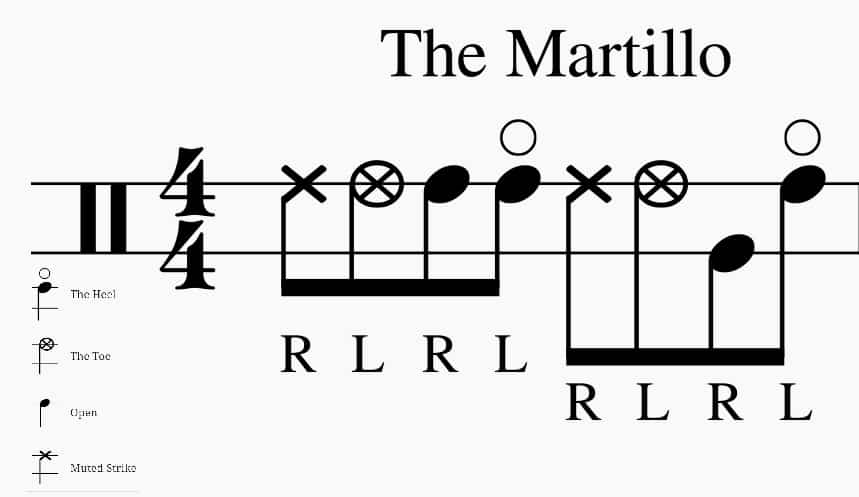
The basic martillo rhythm has slight accents on 1, 2, 3 and 4, but can easily be modified to accent just the beats you want to accent. Even if you just play the basic martillo and accent the beats you want without modifying the rhythm in the slightest, you can be a valuable contribution to a song.
By far, this is the most crucial rhythm to learn if you want to play bachata. The martillo is the foundation for many, many Bachata rhythms. And if you are solid at the technique (check the above video if you need a refresher), then you can start improvising and incorporating sounds from songs that you hear.
Many of the following rhythms are simply variations of the Martillo
Bachata Rhythm 2: The Martillo de Espera
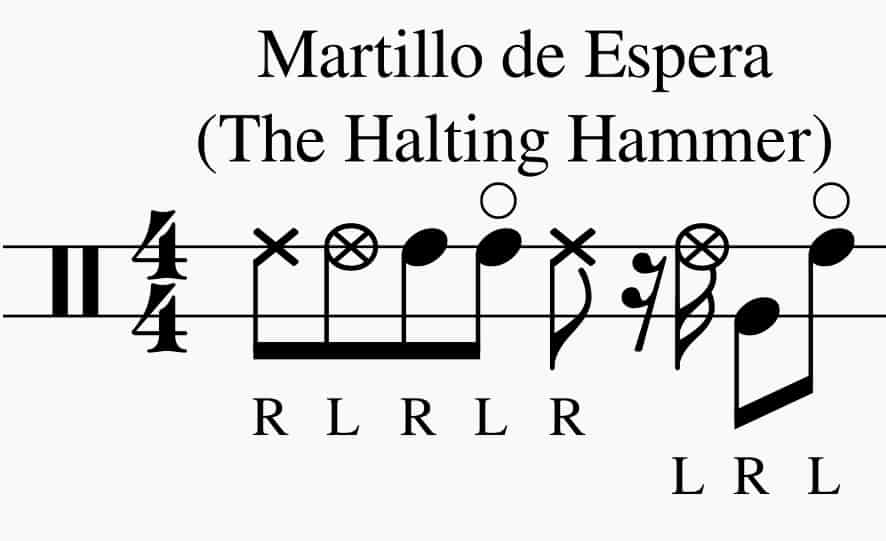
This is a nice, easy modification of the martillo that adds a taste of much needed tension. With this slight alteration this will accent beat 4 that much more.
Bachata Rhythm 3: The Martillo de Fuerza
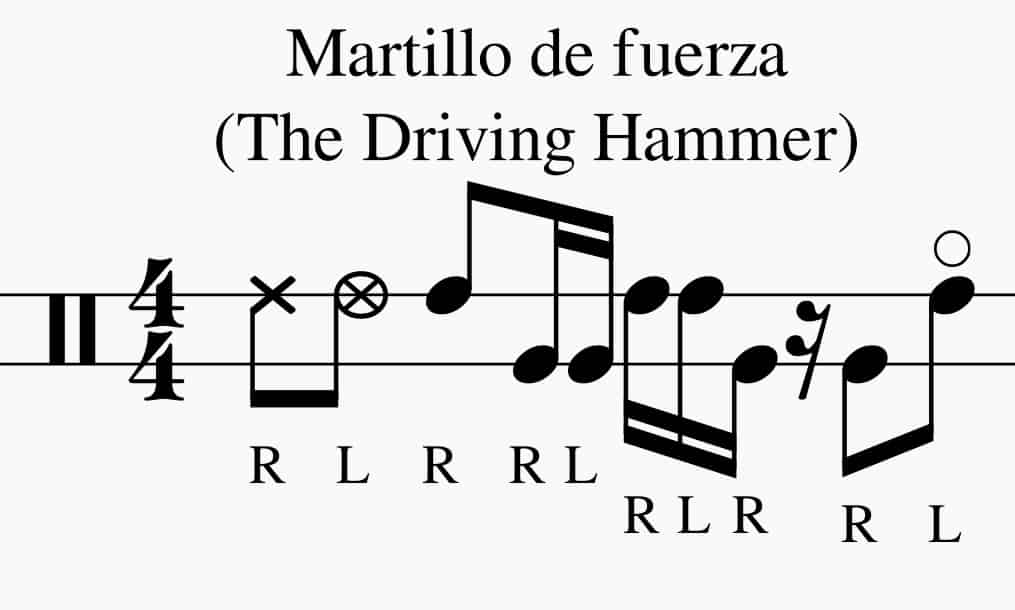
This rhythm adds a bit of flair and is an excellent transition rhythm driving you to the next part of the song.
This rhythm is a little bit more tricky, but if you practice it slowly you’ll be able to get the hang of it.
If you’d like, you can be very soft on the toe (on 1 +) and on the + of 4. This will give you the chance to make the sound pop on 1, 3, and 4, or just 1 and 4, making it a good fit for the Derecho.
Bachata Rhythm 4: Lying in Wait
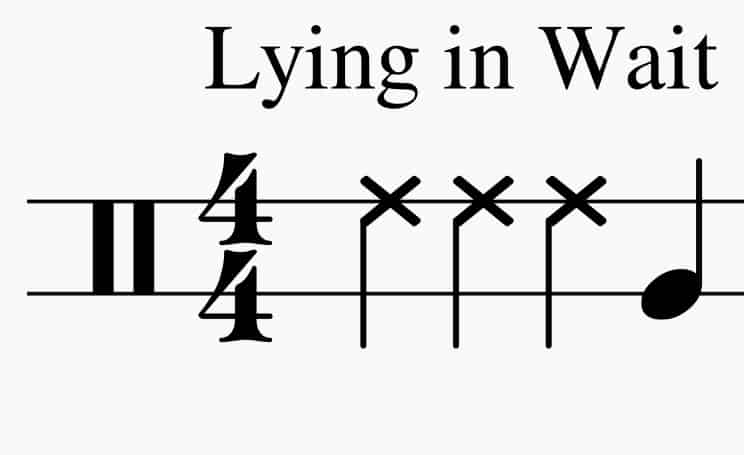
This rhythm is perfect for building tension for the next section of the song–although it’s extremely simple, the listener knows that something compelling is coming.
If you’re doing this rhythm for a few measures, you can do a heel on the + of 4 right before repeating the rhythm.
Bachata Rhythm 5: Martillo de Perforador

This looks more difficult than it is–if you look carefully, the 1st measure is actually just the martillo, except beat 4 is a little different, where you play the hembra twice with your right hand, quickly, before using your left on the macho.
The 2nd measure with the 32nd notes are a little tricky, and will require practicing this very slowly many times before speeding it up.
This can be used as a phrase that you repeat, or you can use this second measure as a fill to lead to another section.
Bachata Rhythm 6: Martillo Paciente
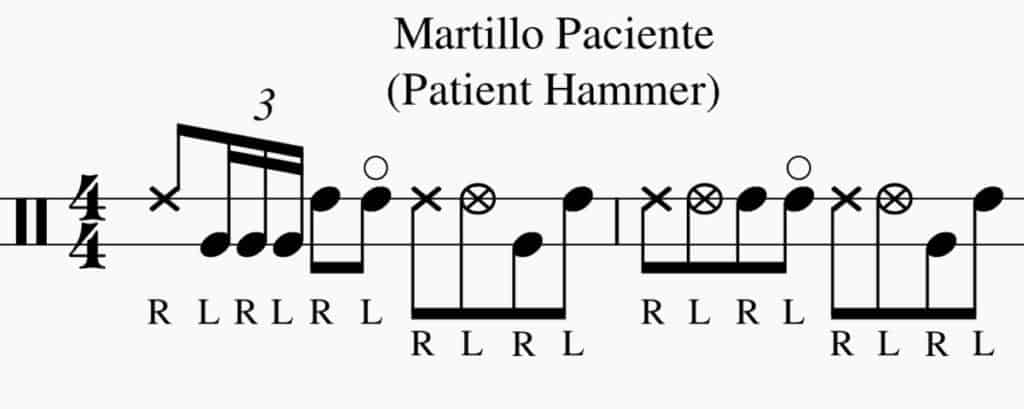
This rhythm works well for a moderate pace and kind of has a bolero feel to it.
The idea and feel to go for is chill. A good rhythm for moving the piece along without rushing.
Bachata Rhythm 7: Lo Minimo
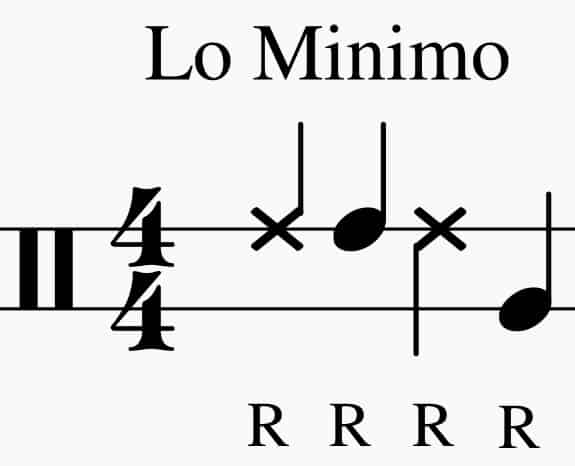
Such a simple rhythm! And you can definitely see the Martillo in there.
This fits the Derecho section and works well in Bachata that is more minimal, where you don’t want the bongo drums to take up too much room in the mix.
Bachata Rhythm 8: Martillo Impaciente
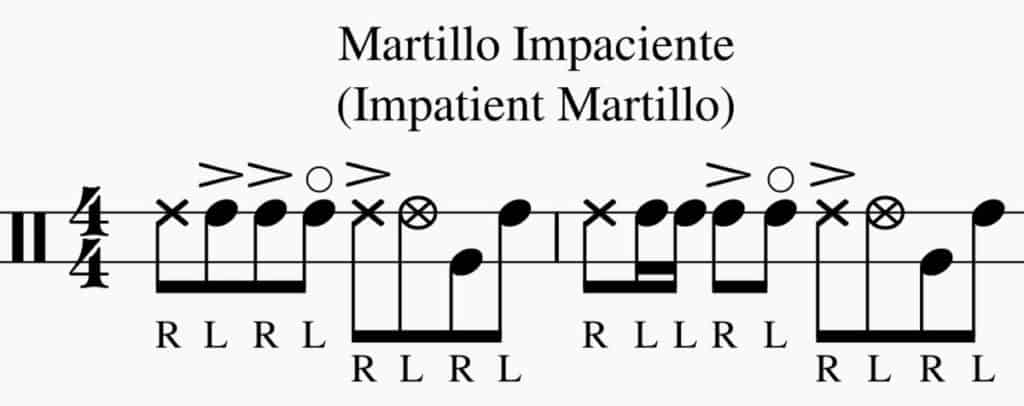
The rhythm starts out excited and ready to progress, with an impatient feel that leaves the listener waiting for what comes next. A rhythm that builds a subtle tension.
Bachata Rhythm 9: Darse Prisa
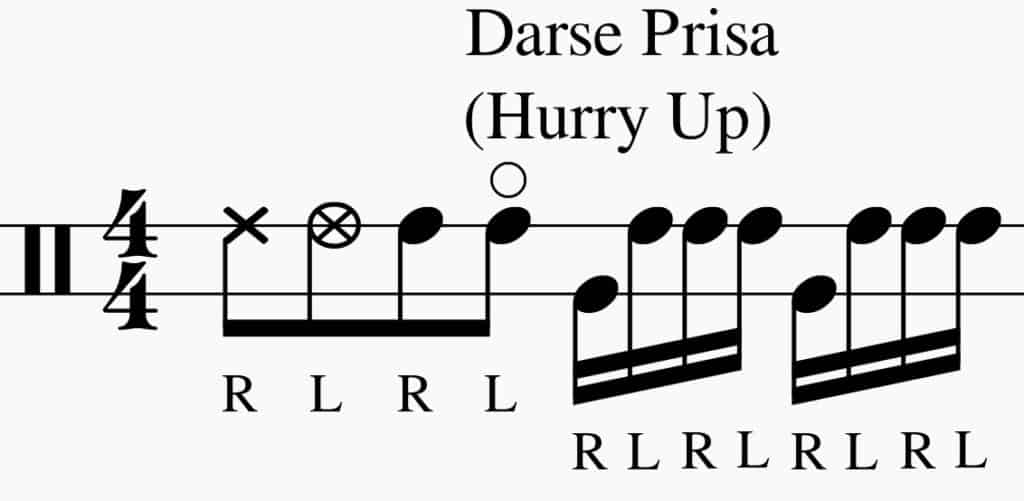
This fairly simple rhythm can be used as a fill. I almost can imagine someone using their hand to tell someone to hurry up!
Bachata Rhythm 10: Almost There

This fill has a fantastic syncopated feel to it with that open hit on the macho with the left hand. It can even be used as a short and sweet, but effective solo for the bongos.
